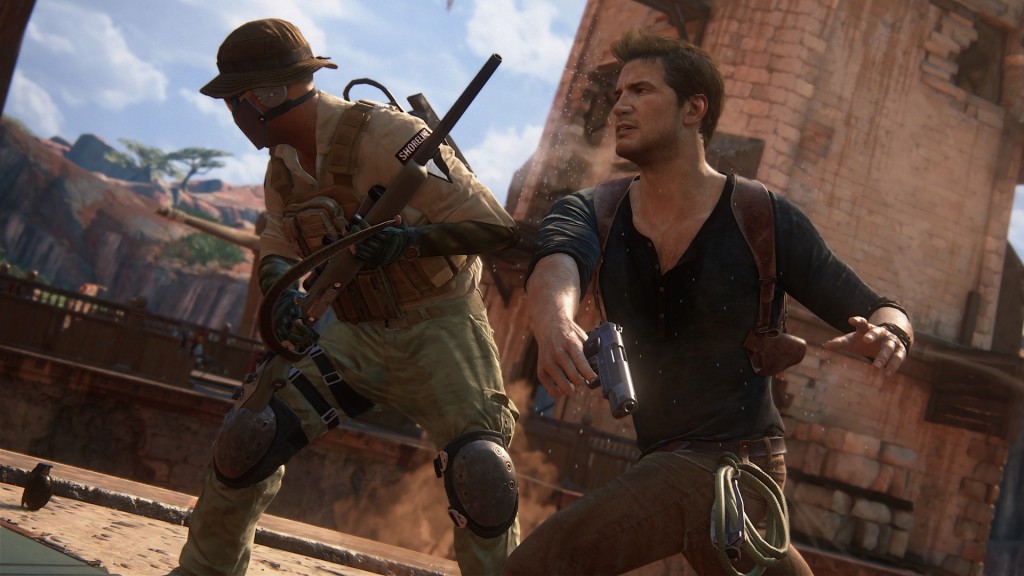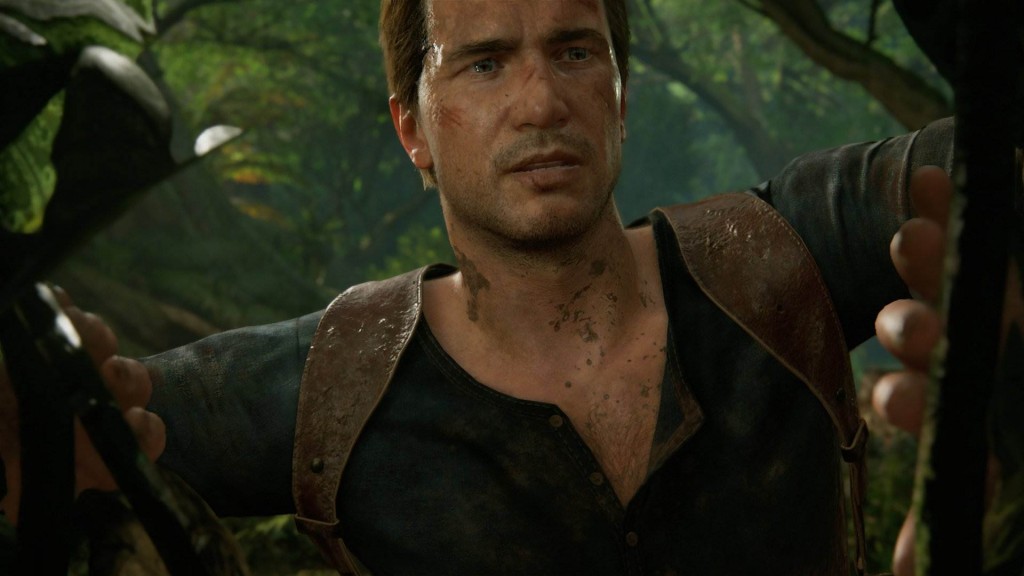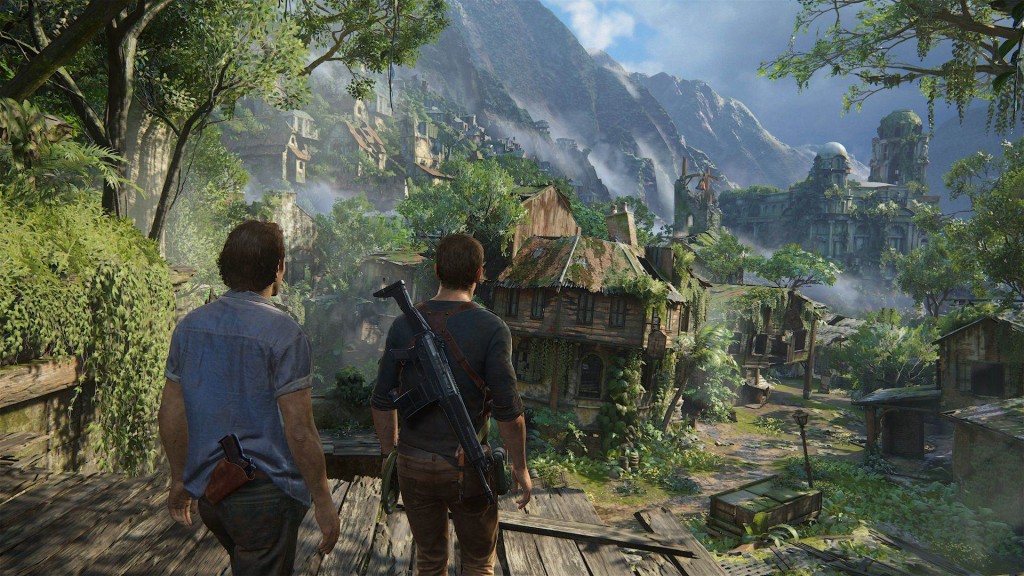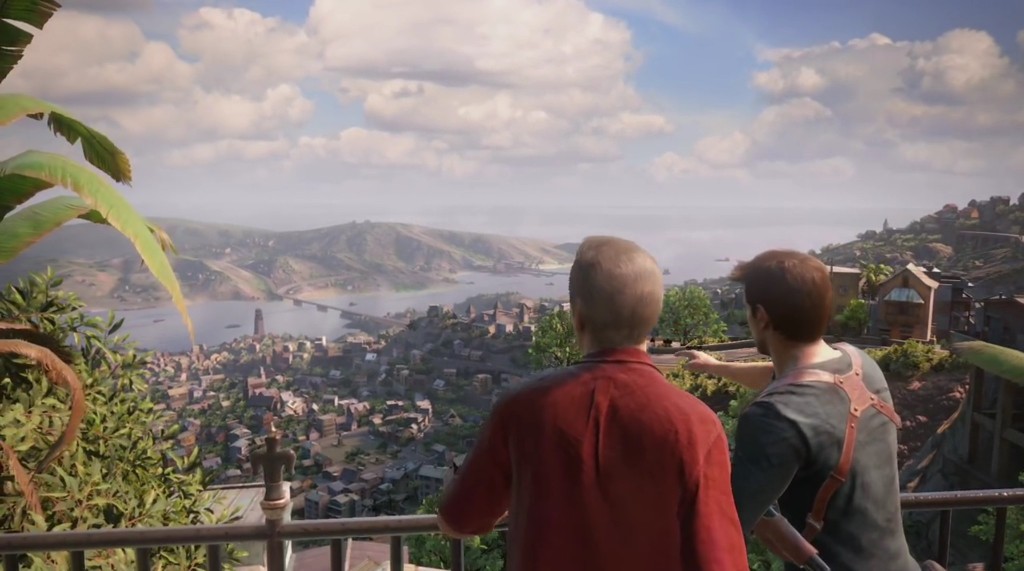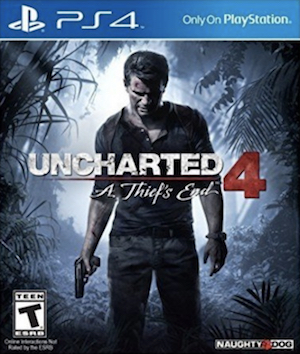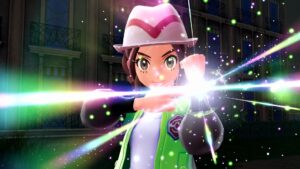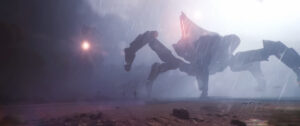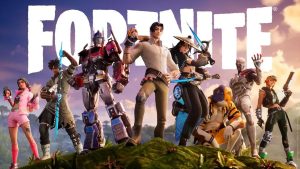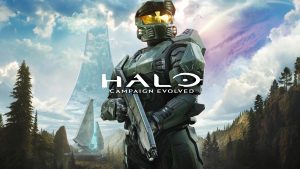
Let’s get one thing straight, right off the bat: the only game so far this generation to be the Uncharted “killer” is Uncharted 4: A Thief’s End. And though that may sound odd, it is the only game that has come close to dismantling its predecessors, and in a lot of ways it has succeeded. If this is the final game in the series, developers Naughty Dog are bowing out with their heads held high, as this masterpiece of a swan song lives up to its hype. Uncharted 4 should proudly be known as the reigning King of action/adventure titles so far this generation. Uncharted 4 doesn’t just live up to its own hype, it obliterates it.
If you’ve played the Uncharted series before, you know it starts out as an innocent, exciting quest that always turns into hell unleashed as nothing ever goes right. The formula remains the same, for the most part, anyway. Except, damn, Nathan’s hair never misses a beat. Must be the product he uses.
Uncharted 4: A Thief’s End is the final chapter in the Uncharted series according to Naughty Dog. As we’re reintroduced to protagonist Nathan Drake, we find him living a all-too-normal-lifestyle; you can see in his eyes that it doesn’t fit him. That is, until his long lost brother, Sam, steps into Nathan’s place of work and asks him to go on one last adventure. A legend unfolds of pirates and treasure, and the long lost, fabled city of Libertalia. What goes on from there is pure, swashbuckling adventure and one damn fine story.
"Let’s get one thing straight, right off the bat: the only game so far this generation to be the Uncharted “killer” is Uncharted 4: A Thief’s End."
Let’s get the usual stuff out of the way first: Uncharted 4 does enough things to say it has innovated and freshened up the third-person shooter and action-adventure genres. From solid gun-play to great camera angles, and wonderful story, playing the game is a treat. Naughty Dog aren’t afraid of the old saying “If it ain’t broke, don’t fix it.” So you will see the usual over the top action returning in the fourth game such as making jumps you know you can’t make but the game insists you can. And by the time you’re finished with the final chapter, you’ll still be asking for more. What’s a bit of a disappointment this time around is the lack of many puzzles to solve. What were available were fun, but most of the puzzling will be, as it has in the past, in the climbing and shimmying across the world around you.
It’s odd, really; the game blurs the contrast between cinema and video games. On one hand you have movies which try their hardest to make people look flawless, blemish free, and completely fake, a lot of the time. In the end it turns into a world of plastic people. Video games, however, strive for realism– add a smile here, wave a hand in good bye, blink. Normal things we take for granted are what the developers at Naughty Dog have strive for. Naughty Dog have become masters of this trade. They have accomplished an ample amount of the quintessential skills it takes to turn plastic people into virtually real, imperfect, living, breathing humans. And when you see the wrinkles, pours, slight twitches, and rolling of the eyes in Nathan Drake, you’ll think he’s truly alive.
Uncharted 4 continues to prove that Nathan Drake is nothing more than a human being– one that can leap great bounds and hang on to any thing for dear life, sure, but normal nonetheless. He is cunning, he is wrong, he is right, he is funny, and he is serious. Nathan portrays the full range of our ethos. We can relate to him and what he’s mentally going through. The writers at Naughty Dog know their child — Nathan — and his personality inside-and-out. That relatable nerve that Nathan exposes is us, all of us, in so many ways. Especially when he shows us those incredibly awkward moments all too often; those moments when he thinks he’s being clever, but it comes out of his mouth all too wrong– those are some of his best moments in this game.
"Naughty Dog aren’t afraid of the old saying “If it ain’t broke, don’t fix it.” And by the time you’re finished with the final chapter, you’ll still be asking for more."
Sadly enough, introducing Sam, even with some of the background taken care of, felt like the last half of a story we never truly knew the details of to begin with. Sam is a man of passion and conviction much like Nathan, however, bringing this long lost brother into the fold in the fourth game of the franchise, trying to jam an entire back history of this man we know nothing about felt null. What you get when you add up all the parts is a suave, clever, and heavy-hearted man, but not one I could ever really care much for. To get this sort of substance out of Nathan, it took Naughty Dog three games to allow us the pleasure to understand the intricacies, and ethos of what he is truly about, and in game four we are still learning more about Nathan and his struggles of letting go. But you never get that sense that Sam is there for good or bad, even to the end you’ll wonder: Was Sam a necessary ingredient to this delicate recipe?
What Naughty Dog decided, in a strangely audacious format is the fact that Sam sticks with Nathan throughout most of the game, sort of as co-op NPC (non-playable character) companion. At least he is helpful and non-static. In other games that have an NPC co-op partner such as Resident Evil 4, having to cope with the abilities of what that NPC is capable of can become quite the hassle. Will he/she go to the door and open it or get stuck along the way? Will he/she shoot targets or just get shot at? Those are all questions that come to mind when playing a game with an NPC for a co-op companion.
In Uncharted 4 after the first couple hours, those questions tend to fade far away. There’s never a moment when you’ll have to heavily rely on Sam to help you along the way as Nathan will end up doing most of the work. That’s a good thing. When you do need Sam’s help, he is always reliable because it’s focused on actions Nathan has to take beforehand. Such as getting a boost to a higher ledge involves Nathan first being there to initiate the boost. There’s never a sense of being weighed down by Sam’s presence. Though later on Sam does add a substantial amount to the story.
For those who were excited over the idea of branching dialog in an Uncharted game, be prepared for disappointment. You do get a chance to hear specific dialog from time-to-time, but they aren’t truly branching at all — it would be more appropriate to refer to them as twig dialog. Whatever path of dialog you choose to select usually ends up in a short synopsis and doesn’t go any further. It’s an interesting and a cool experiment on Naughty Dog’s part, but overall it’s frivolous and adds virtually nothing to the overall experience. In addendum, if you’d like to hear the other story branches, you’re going to have to replay the game several times or restart checkpoints. This is a game you’ll have the urge to play over several times, so uncovering those other story options shouldn’t be much of a hassle.
"Sadly enough, introducing Sam, even with some of the background taken care of, felt like the last half of a story we never truly knew the details of to begin with."
The fluidity of the full motion capture taken by means of using real actors in capture uniforms, transfers over into the game brilliantly. Movement by any means — taking off a jacket, slanting from a simple gesture, or even just a nodding of the head is portrayed with such finesse, it often felt more than realistic; it felt genuine. Add to that the solid gunplay where Nathan wields a rifle like a pro and the authenticity is a spectacle to behold.
Oddly enough, the game forces you into melee combat scenarios from time to time. These entail Nathan going headlong into fisticuffs with an enemies. These fights are often –but not always — theatrical and scripted. Sure, if you miss a button press and get hit too much it’s not a good thing, but with no defense button for a proper block, you’ll often get the feeling that all you need to do is throw a few punches, wiggle out of a couple of body locks and the fight will conclude. In past Uncharted games, there was always weak melee but it was never a focus point. Turning the attention more towards these melee events showered on a sequence that felt more like fluff rather than a hand-to-hand fight that meant something.
The dynamic relationship between Sam and Nathan felt genuine. A true sense that those two really knew each other well (as any sibling should) shows the sincerity and passion of the writing that’s gone into making Uncharted 4 a one-of-a-kind gaming experience. Segue that into another new introduction in the Uncharted series: the grapple and rope. Nathan and Sam carry along the grapple and rope for this fourth adventure — why it took so long to think of bringing rope in a climbing game is beyond me. This helps the brother duo cross rivers and chasms, and swing down on enemies with ease. Unfortunately the grapple and rope lead to plentiful moments of: “why can’t he just use the grapple to get up there instead of sending Sam through a dangerous path?” Now you understand the segue, see!
And then there is the inevitable driving of a vehicle. We all knew it was coming to an Uncharted game eventually. These amazing sequences where Nathan takes control of a 4X4 vehicle are not only exhilarating, but they work really well. High speed runs from enemy vehicles never felt more fresh as they attack from all sides. The Jeep’s handling was better than in most driving games I’ve played. Banking corners and quick reflexes shine with precision controls.
"Unfortunately, the grapple and rope lead to plentiful moments of: “why can’t he just use the grapple to get up there instead of sending Sam through a dangerous path?”"
Another interesting endeavor for Nathan is the optional use of stealth in-game. What used to be a pure 3rd person action/adventure series has now added in what you can decide to be a light or heavy stealth component. During certain segments, enemy AI have line of sight inference that allows them to suspect and investigate out of the ordinary situations. These occur when Nathan is sneaking around and makes a noise or shows himself, that will catch the enemy AI’s attention. Much like Assassin’s Creed, enemy AI will start off with a clear counter that fills white the more it suspects something is suspicious. Upon filling the counter white it will then turn to yellow which means the enemy is on to you and begins to heavily search what he saw. If the enemy AI sees you one time after that point, the yellow counter will turn orange and the enemy will then begin to fire upon Nathan. Climbing back down a ledge will return Nathan to stealth again after a few moments. The stealth is solid for the most part. Sometimes enemies will lose their pattern and walk in strange locations that makes the stealth that much harder to use, but overall it was a welcome addition.
What Uncharted 4 offers that no other game at this time can come close to matching is the scope of breathtaking visuals which envelopes the world everywhere. Spinning globes, rotting vines, rusted beams, it feels like there is no end to its majesty. The mountains and vistas of Madagascar poking through the clouded mist swallowing the island; sea life of every imaginable color and likeness breathing life into the waters below; and snow drenched mountaintops hiding ancient pirate ruins forgotten centuries ago are just a few elements of this breathtaking, visual experience. This is the definitive graphical powerhouse this moment in time for this generation on any console, even gaming PCs.
Experiencing the musical score within Uncharted 4 was like going to a live orchestra. Those moments where life or death are possibilities when hanging onto a cliff for dear life ring through as the sound portrays the atmosphere and the acceleration narrows or widens immensely. This is definitely a game that is in constant acceleration. There are few moments when you can actually take a breath and calm down with the musical score, but those slower moments are often story moments that bring the right choral for that moment of jaw-dropping intrigue.
"This is the definitive graphical powerhouse this moment in time for this generation on any console, even gaming PCs."
By the time you’ve completed Uncharted 4 you won’t be able to name many other games with that perfect sense of pacing that really brings this game together. Uncharted is that unique series that transcends many games in and out of the action/adventure genre. And Uncharted 4 is no exception. What’s present and brought to the forefront as only Naught Dog seems to be able to attest that unadulterated, clandestine sense of discovery. Uncharted 4 provides those magical moments; moments which are not even mentioned in legends, and you think to yourself: “I’m the only one that’s been here in hundreds, maybe even thousands, of years.” It’s that adventure that overwhelms our senses and truly makes Uncharted 4: A Thief’s End standout as the Uncharted killer.
This game was reviewed on the PlayStation 4.
A visual masterpiece. A majestic, constantly unfolding story. A fulfilling, complete feeling game that will make you want to play again and again. Solid fun.
Sam feels unnecessary and is given a rushed intro. The grapple and rope aren't used in the most obvious ways, Too much sliding, and a "been there, done that" sense at times.









